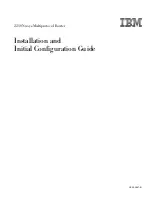
1-2
Figure 1-1
Format of DUID-LL
Typical DHCPv6 Network Application
Figure 1-2
Network diagram for DHCPv6
Figure 1-2
shows a typical DHCPv6 network. A DHCPv6 client uses a multicast address to contact the
DHCPv6 server on the local link to obtain an IPv6 address and other configuration parameters. If the
DHCPv6 server resides on another subnet, the DHCPv6 client can contact the server via a DHCPv6
relay agent. Thus, you do not need to deploy a DHCPv6 server on each subnet.
Currently, the device can only serve as the DHCPv6 client and relay agent. Serving as a DHCPv6 client,
the device only supports stateless DHCPv6 configuration instead of stateful DHCPv6 configuration, that
is, the device can only obtain other network configuration parameters instead of an IPv6 address from
the DHCPv6 server.
Stateless DHCPv6 Configuration
After obtaining an IPv6 address through stateless address autoconfiguration, a device can use
stateless DHCPv6 to obtain other configuration parameters (such as the DNS server address or domain
name) from a DHCPv6 server. Since the DHCPv6 server does not maintain the state information of the
device, this application is called stateless DHCPv6 configuration.
Содержание S7902E
Страница 82: ...1 4 DeviceA interface tunnel 1 DeviceA Tunnel1 service loopback group 1 ...
Страница 200: ...1 11 DeviceB display vlan dynamic No dynamic vlans exist ...
Страница 494: ...ii Displaying and Maintaining Tunneling Configuration 1 45 Troubleshooting Tunneling Configuration 1 45 ...
Страница 598: ...ii ...
Страница 1757: ...4 9 ...
Страница 1770: ...6 4 ...
Страница 2017: ...2 11 Figure 2 3 SFTP client interface ...
Страница 2062: ...i Table of Contents 1 URPF Configuration 1 1 URPF Overview 1 1 What is URPF 1 1 How URPF Works 1 1 Configuring URPF 1 2 ...
Страница 2238: ...1 16 DeviceA cfd linktrace service instance 1 mep 1001 target mep 4002 ...
Страница 2442: ...2 4 Set the interval for sending Syslog or trap messages to 20 seconds Device mac address information interval 20 ...
















































